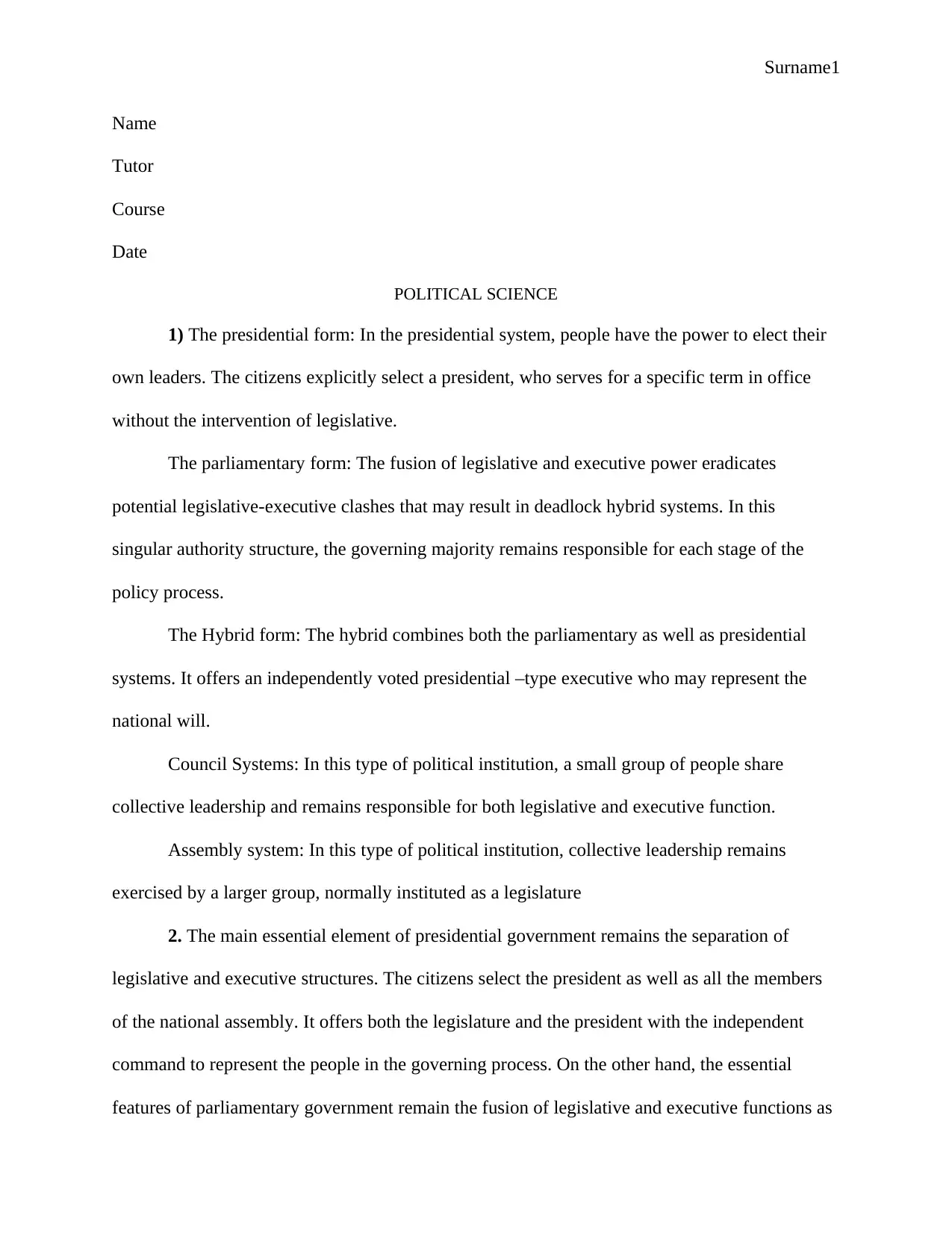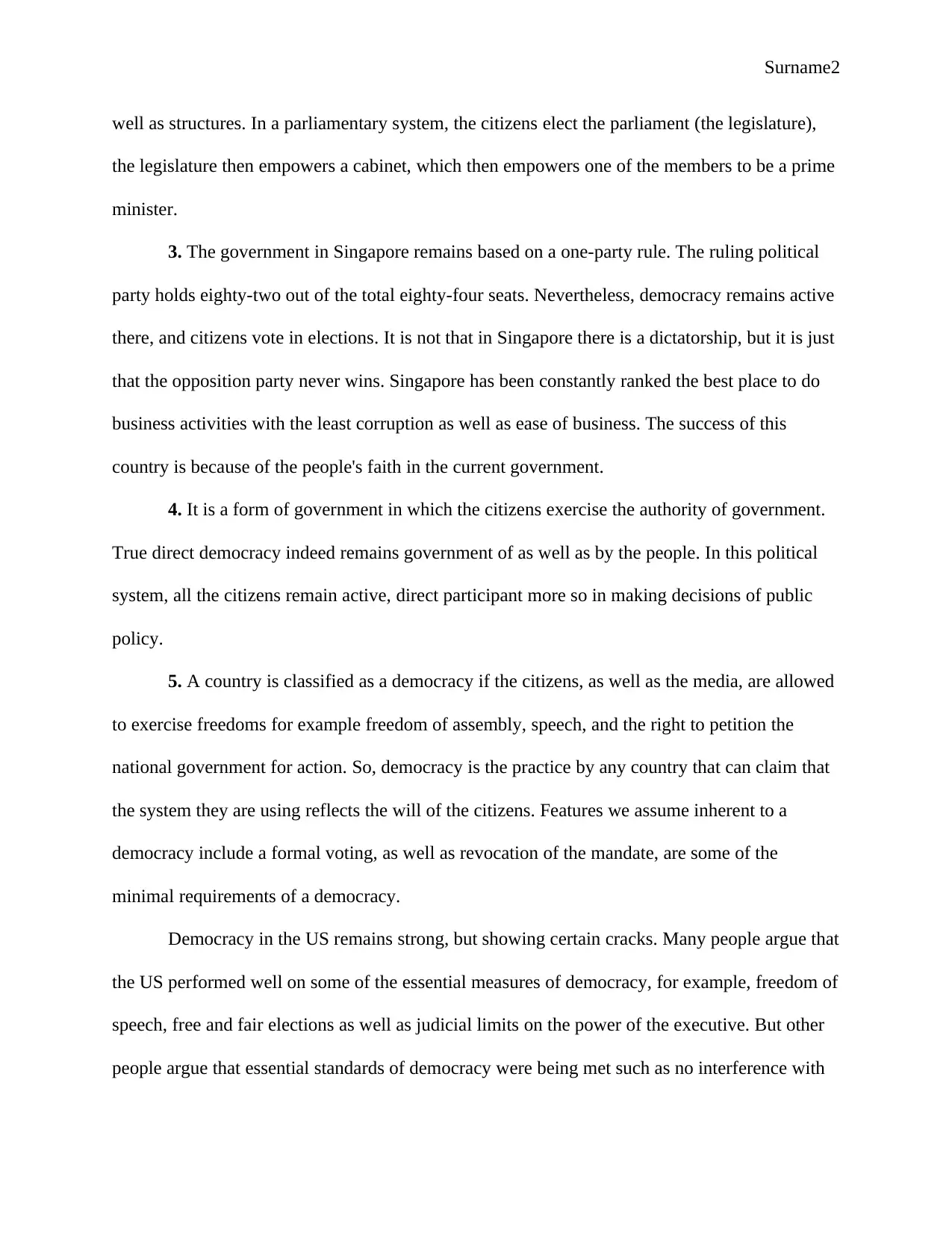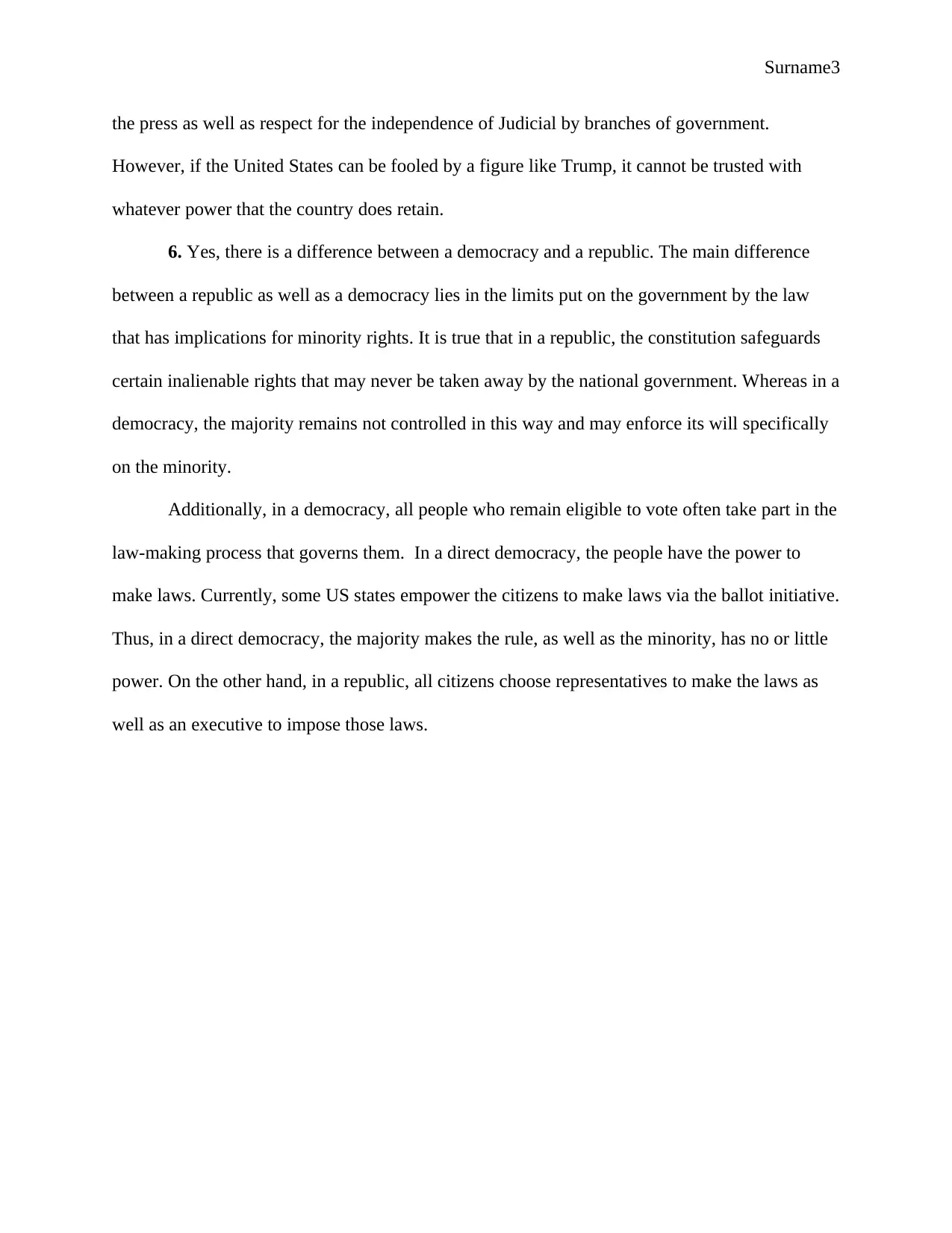POLS 200: Analysis of Political Systems and Democratic Principles
VerifiedAdded on 2022/09/24
|3
|853
|24
Homework Assignment
AI Summary
This assignment delves into the comparative analysis of various political systems, including presidential, parliamentary, and hybrid models, highlighting their core characteristics and differences. It explores the concepts of democracy, distinguishing between direct democracy and republics, and examines the practical application of these systems in different countries, such as Singapore and the United States. The assignment emphasizes the separation of powers, the roles of legislative and executive branches, and the factors that define a country's democratic status, including freedoms and rights. It also touches on the nuances of governance, the influence of ruling parties, and the importance of citizen participation in political decision-making. The analysis includes an assessment of the strengths and weaknesses of different governmental structures and their impact on societal outcomes, providing a comprehensive overview of political science concepts.
1 out of 3










![[object Object]](/_next/static/media/star-bottom.7253800d.svg)